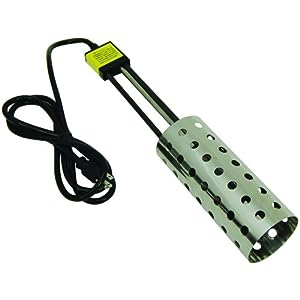Never seen or heard of the foil wrap on a brew pot... no offense... seems silly, and may draw more heat away from the pot.
The foil wrap definitely insulates the pot. I boil 8 gallons on my stove using this method.
I use a 10gal pot and place it over two burners. The pot is not quite big enough to fit completely on both burners so I put it just barely covering the entirety of the large front burner and 1/2 on the smaller back burner and crank them both to max.
My foil method is to remove the coils, lay down criss-crosses of foil in the "bays" such that, when the coil is replaced on top (by punching a hole in the foil), there's about two feet of extra foil sticking out in all directions from underneath the coil. Then, I put the pot on the burners, flip those foil flaps up against the pot, take a large strip of foil and wrap it around the pot all the way. I add a couple more strips around the pot, making sure to create a 'seal' against the stovetop so that as little heat can escape as possible. Since the pot only covers half the back burner, the foil just wraps directly over that burner and up the pot anyways... that heat is still useful even though it's not directly touching the burner. It makes a big difference to wrap the foil around the pot AND the burner as opposed to just the pot... most of the heat you lose on an electric burner is lost to the air underneath the pot or lost to the metal of the stove itself. Without the foil wrap, I can't touch the stove at all or it will burn me. With the wrap, I can put my hand on it indefinitely.
When bringing the pot up to boil I leave the lid on, then remove it for the boil (sometimes I leave it 1/2-1/3 on to make the boil more rigorous if need be, a partial cover works fine, I'm leery of covering it more than halfway though). It helps if you use heavy duty foil... I recently picked up some 18" wide foil, it's great for wrapping around the pot. It also helps to try to "seal" the foil against the side of the pot near the top since heat loves to rise... you want to trap it in there as best you can... the majority of the heat 'wants' to take the easiest way out, you basically want to eliminate all easy ways out so as much heat as possible gets transferred to the liquid in the pot.
With this method, I went from not being able to boil 7 gallons to getting a rigorous boil from cold tap water in about a half hour. It makes a huge difference.
The one thing to look out for is if your stove has any plastic dials or switches near your pot, watch out for heat venting directly onto the dials, it's possible to melt them.
Also, buying a canning element can help... it's an electric burner that outputs more heat since it has a couple extra coils. I got one for about $20 and switched out the large burner on my stove for it. I use it all the time for brewing and it's great for my wok and other cast iron cookware.
I'm brewing tomorrow, I'll take a couple pictures and post them up.













